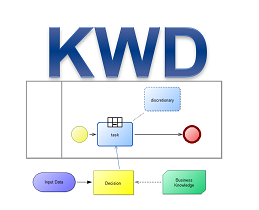Details
The Knowledge Work Designer is a tool that implements a modeling method, which supports processes that involve knowledge work.
Process logic is the knowledge about the process, in particular the process flow with events and activities, the involved participants and resources. The process logic is typically represented in a business process diagram.
- For structured processes, the activities and the conditions for their execution are known in advance. The Knowledge Work Designer uses the Business Process Model and Notation BPMN 2.0 (OMG 2011) to model structured business processes.
- Case processes contain both structured and ad-hoc parts. Human judgment and external events determine how to proceed (McCauley 2010). Case Management has been proposed as an alternative approach for the management of case processes (Palmer 2011). The Case Management Model and Notation (CMMN) is a modelling language specific for case management (OMG 2014).
- Structured processes and case processes typically cannot be strictly separated. The OMG standards, however, require the modeler to decide between a structured process and a case from the beginning. To overcome this shortcomming, the Knowledge Work Designer supports the different structure degree of process logic (i.e. structured processes and case processes) by providing a new model type called BPCMN (Business Process and Case Management Notation).
The distinction between different degrees of structure is not only relevant for process logic, but also for business logic.
- Business rules can be represented in natural language or in a semi-structured form like the SBVR Structured English Notation (OMG 2008 Annex C).
- Decision making often is based on a fixed number of decision criteria which can be represented in a structured way using decision tables, which are part of the Decision Model and Notation DMN (OMG 2015).
The next figure shows the user interface of the modelling tool with a BPMN sample process.
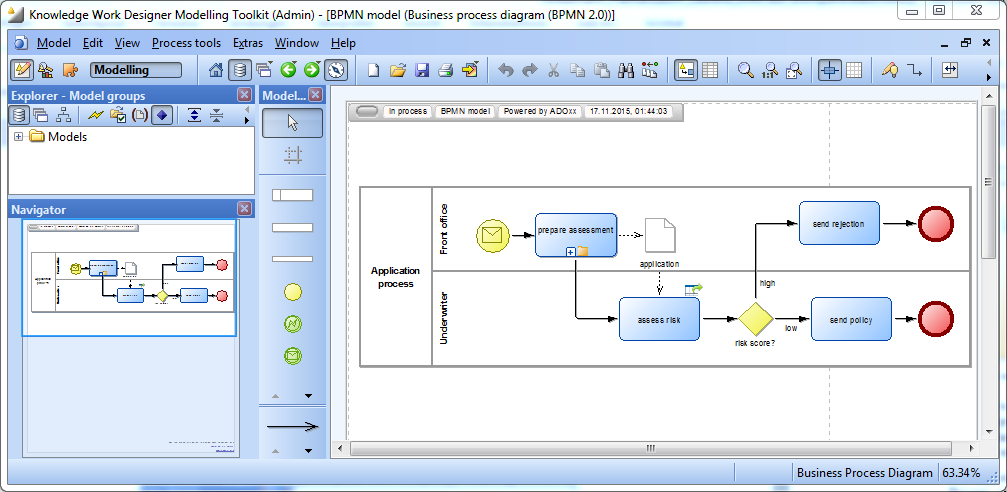
The next figure shows an example of a case management model in the Knowledge Work Designer tool. The diamonds on the boundaries of tasks are called Sentries. Sentries define the criteria according to which the plan items are enabled and terminated.
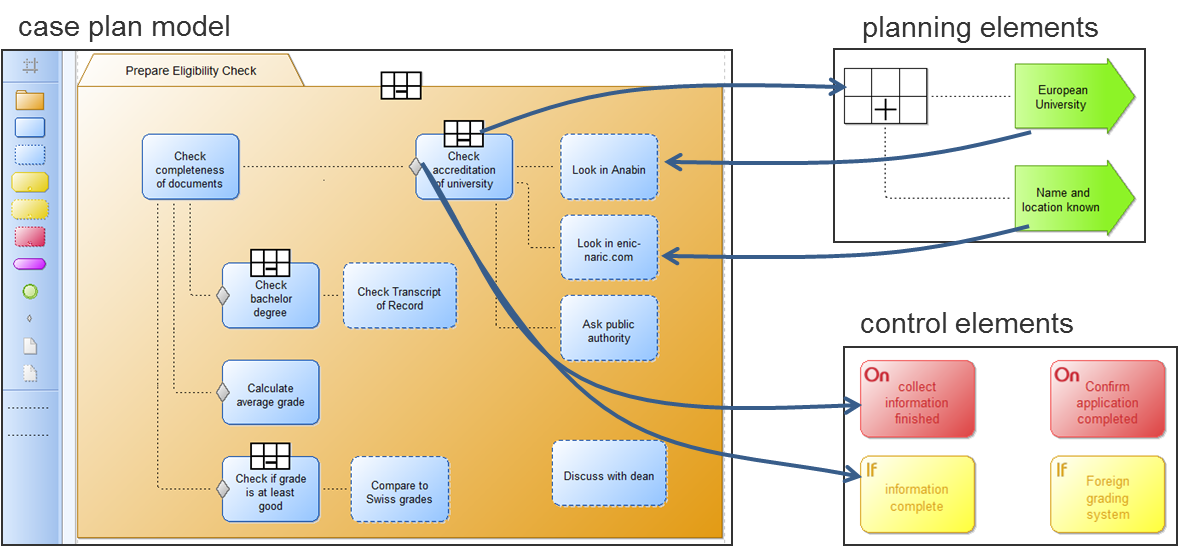
A sentry is a combination of an event and/or a condition. An On-Part specifies the event that serves as a trigger. The If-Part specifies a condition that evaluates over the Case File. In order to enable reuse, conditions and events of sentries are modelled in a separate model type - the control elements model (see at the lower right-hand corner of Figure 2). Furthermore, the case worker is supported in his/her planning by applicability rules. The applicability rules are modelled in a separate model to enable reuse for different discretionary tasks.
While case management is often considered as different from conventional business process management (Palmer 2011), in reality they cannot be strictly separated. The BPCMN model type deeply integrates modelling of structured processes and cases (see next figure). Flexibility of process execution is represented by the discretionary tasks, whose execution depends on the judgment of the individual worker. Furthermore, it is possible to add tasks, which are not part of the sequence flow and thus can be executed as soon as their sentry evaluates to true.
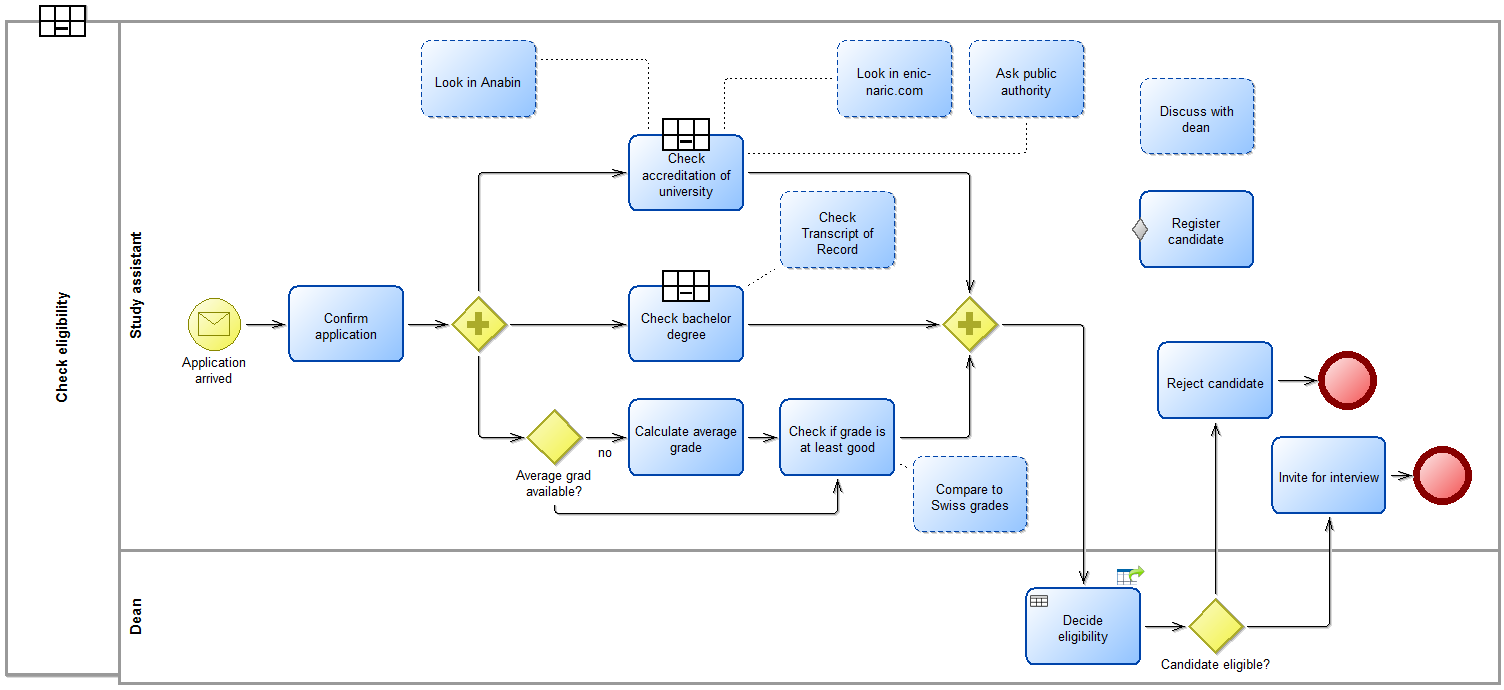
To model decision logic, our tool supports the Decision Model and Notation (DMN) from the OMG (2015). The left part of the next figure shows a Decision Requirements Diagram consisting of four elements: Decision, Business Knowledge, Knowledge Source and Input Data.
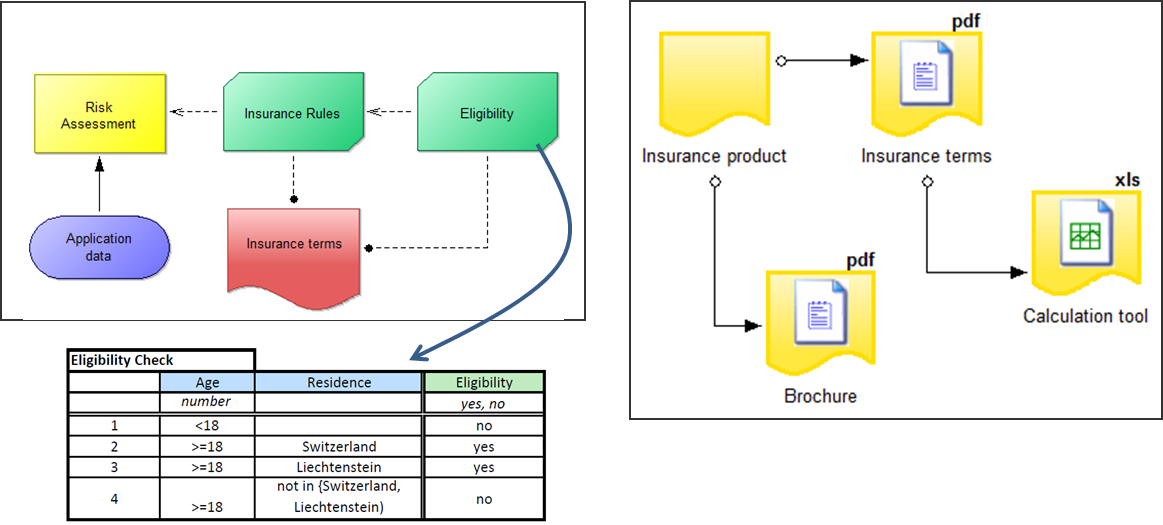
The decision rules can be represented in many different ways. A decision table is a formal representation, which can be interpreted by humans and can be translated into code for a rule engine. The document model can be used to represent non-structured business logic, knowledge sources and documents of a case file. To represent decision-aware business processes (von Halle & Goldberg 2010, p.66ff), the Knowledge Work Designer tool supports referencing of decisions and documents from tasks:
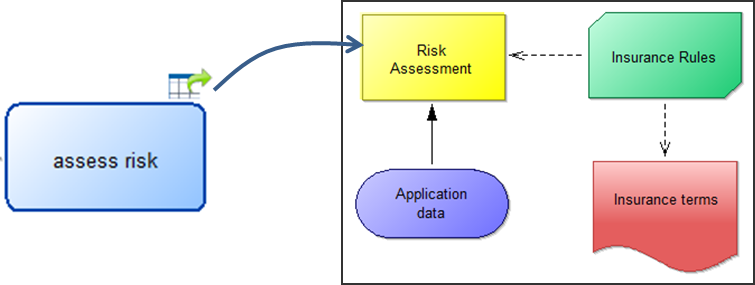
References
Davenport, T.H., 2010. Process Management for Knowledge Work. In J. vom Brocke & M. Rosemann, eds. Handbook on Business Process Management 1. Berlin, Heidelberg: Springer, pp. 17–36.
von Halle, B. & Goldberg, L., 2010. The Decision Model: A Business Logic Framework Linking Business and Technology, CRC Press Auerbach Publications.
McCauley, D., 2010. Achieving Agility. In Layna Fischer, ed. Mastering the Unpredictable: How Adaptive Case Management Will Revolutionize The Way That Knowledge Workers Get Things Done. Future Strategies Inc.
OMG, 2011. Business Process Model and Notation (BPMN) Version 2.0, Needham, MA: Object Management Group OMG. Available at: http://www.omg.org/spec/BPMN/2.0/PDF/.
OMG, 2014. Case Management Model and Notation Version 1.0, Needham, MA: Object Management Group OMG. Available at: http://www.omg.org/spec/CMMN/1.0/PDF.
OMG, 2015. Decision Model and Notation Version 1.0, Needham, MA: Object Management Group OMG. Available at: http://www.omg.org/spec/DMN/1.0/PDF.
OMG, 2008. Semantics of Business Vocabulary and Business Rules (SBVR) v1.0, Available at: http://www.omg.org/spec/SBVR/1.0/PDF.
Palmer, N., 2011. BPM and ACM. In L. Fischer, ed. Taming the Unpredictable. Lighthouse Point, FL, pp. 77–86.

